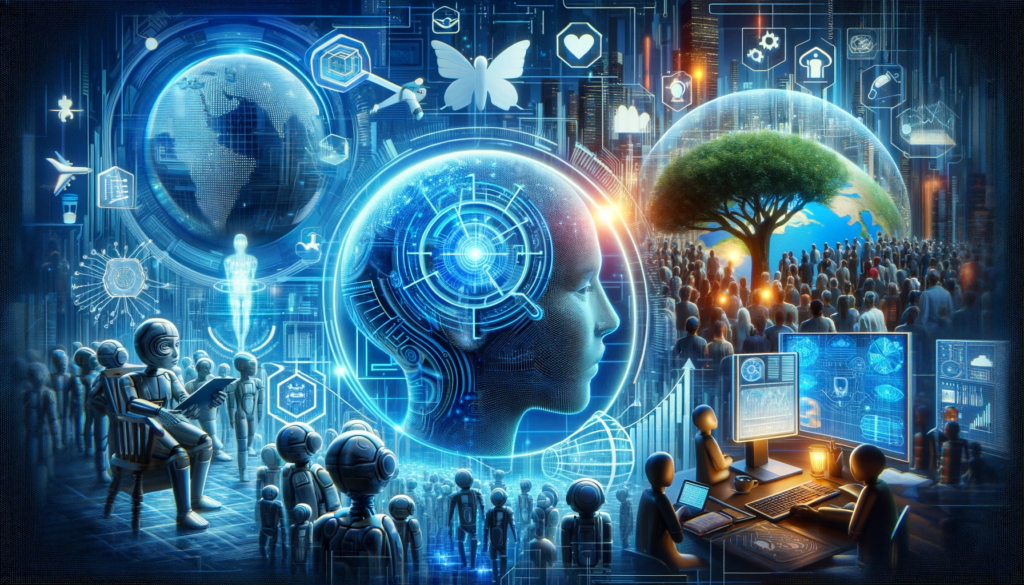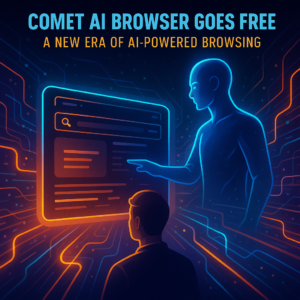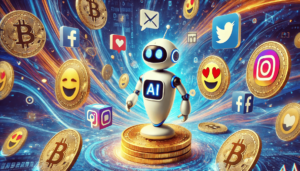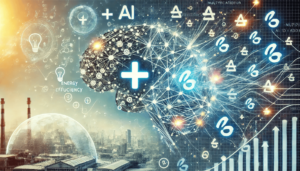Envisioning a Future Empowered by AI: Insights from Bill Gates’ 2024 Outlook

Illustrating the transformative power of AI in reshaping education, healthcare, and global equity as envisioned by Bill Gates in his 2024 outlook.
- How is AI Transforming Professional and Personal Domains?
- What is the Impact of AI on the Job Market?
- How Can AI Revolutionize Education and Mental Health?
- What Role Does AI Play in Addressing Global Health Inequities?
- What are the Ethical Considerations and Responsibilities in AI Development and Deployment?
In a world increasingly shaped by rapid technological advancements, few voices carry as much weight and insight as that of Bill Gates. Renowned for his foresight in the realm of technology and philanthropy, Gates’ annual letters have become a beacon of inspiration and a guide for understanding the trajectory of global development. His latest missive, “The Year Ahead 2024,” available in full at GatesNotes, is no exception. In this year’s letter, Gates turns his astute gaze towards the burgeoning field of Artificial Intelligence (AI), a domain that he believes is poised to redefine the contours of our future.
2023, for Gates, was not just a year like any other. It marked a personal milestone as he embraced the role of a grandparent, but more significantly, it was the year he extensively employed AI for work, transcending beyond its use for mere entertainment. This personal pivot towards AI in professional domains underscores a broader trend: AI is no longer a distant marvel of the future; it is a tangible, impactful reality of our present. Gates’ reflections in the letter encapsulate the potential of AI to revolutionize various facets of human life, from the job market and education to mental health and global inequities. His vision is not just about the technological leaps AI promises but also its capacity to serve as a tool for equitable global development.
As we delve into Gates’ perspectives, we embark on a journey that explores AI’s multifaceted implications, driven by a blend of optimism and a critical understanding of the challenges ahead. The letter serves as a roadmap, helping us navigate the complex landscape of AI’s potential to shape a better world for future generations.
Gates’ Personal Journey with AI
023 stands as a watershed year for Bill Gates, a period not only marked by the joy of becoming a grandparent but also as the year he significantly embraced Artificial Intelligence (AI) for serious, professional endeavors. This pivot is not just a personal anecdote but a reflection of a broader societal shift, where AI has transcended its nascent stages of novelty and entered a realm of practical, impactful utility.
Gates, a luminary in the tech world, traditionally associated with pioneering the personal computing revolution, has now turned his insightful gaze towards AI. This transition is noteworthy – it represents a realignment from a figure who has been at the forefront of technology for decades. Gates’ engagement with AI in 2023 was not limited to experimental or frivolous pursuits. Instead, it extended to substantial applications, encompassing work and other serious avenues. His decision to utilize AI tools for tasks such as summarizing extensive briefing materials for the Gates Foundation’s strategy reviews indicates a significant endorsement of AI’s practicality and effectiveness.
This move signals a broader, global paradigm shift in the adoption of AI. Gates’ experiences mirror a growing trend where AI is increasingly seen as a viable tool for enhancing productivity and decision-making in professional settings. It marks a departure from AI being a mere technological curiosity to becoming an integral part of the fabric of modern work life.
In essence, Gates’ journey with AI in 2023 exemplifies a critical juncture in the evolution of AI – from theoretical and experimental to practical and mainstream. It underscores the increasing relevance and indispensability of AI in our daily lives, heralding a future where AI is not just an adjunct but a central player in shaping our world and its future.
AI’s Dual Role in the Job Market: A Comprehensive Outlook
In his 2024 annual letter, Bill Gates illuminates the evolving landscape of the job market under the influence of Artificial Intelligence (AI). He astutely recognizes AI’s dual role – its potential to both replace and augment human jobs. This intricate balance highlights a pivotal moment in our approach to workforce development and job creation, as we navigate through the era of intelligent technology.
Gates envisages a future where AI doesn’t merely usurp human roles but rather acts as a copilot, enhancing human capabilities and productivity. This perspective aligns with insights I’ve shared on “AI and the Future of Work: Insights from European Trends”. AI’s ability to automate tasks, process vast amounts of data, and even make predictive decisions, can revolutionize industries by improving efficiency and creating new opportunities for human workers to engage in more complex, creative, and strategic roles.
The transition, however, isn’t without its challenges. As AI reshapes the job market, it necessitates a transformation in workforce skills. Adapting to this change means not only acquiring new technical proficiencies but also developing an agility to work alongside AI. This evolution in the job market demands a rethinking of our approach to education and continuous learning, emphasizing on skills that AI cannot easily replicate – critical thinking, creativity, and emotional intelligence.
Interestingly, Gates’ vision resonates with the ideas presented in “AI Frontiers: Mastering the Workforce Evolution in the Age of Intelligent Tech“. The article underlines the need for a proactive approach to harness the benefits of AI while mitigating its disruptive impact on jobs. It stresses the importance of re-skilling and up-skilling initiatives, and the creation of a supportive ecosystem that enables a smooth transition for workers into AI-augmented roles.
In essence, Gates’ insights and these complementary perspectives form a narrative that is not about AI versus humans in the job market, but rather about AI and humans working in synergy. This approach fosters a job market that is not only resilient in the face of technological advancements but is also dynamic and inclusive, offering opportunities for growth and innovation.
By embracing AI as a partner rather than a replacement in the workforce, we can unlock a future that leverages the best of both human and machine capabilities. This dual role of AI – as a tool for both replacing and augmenting jobs – presents an exciting frontier, one where the workforce evolves to meet the demands of an increasingly intelligent and interconnected world.
AI’s Potential in Education and Mental Health: A Transformative Outlook
Bill Gates’ 2024 annual letter delves into the transformative potential of Artificial Intelligence (AI) in the realms of education and mental health, underscoring its capacity to personalize learning experiences and bolster mental health support.
Gates’ optimism about AI in education is grounded in its ability to tailor educational content to individual learning styles and paces. This personalized approach, as he envisions, can revolutionize the traditional education system, making it more adaptive and inclusive. AI-powered tools and platforms can analyze students’ learning patterns, identify areas where they struggle, and provide customized resources to aid their understanding. This not only enhances the educational experience but also bridges learning gaps, ensuring that every student has access to the education they deserve.
Moreover, the integration of AI in education opens doors to innovative learning environments. For instance, AI-driven simulations and interactive modules can transform abstract concepts into engaging, tangible experiences, fostering a deeper understanding and retention of knowledge. This technology also democratizes education, offering high-quality learning resources to students in remote or underserved areas, thus leveling the educational playing field.
In the sphere of mental health, Gates highlights AI’s potential to extend and enhance care. AI’s role in mental health care is multifaceted – from early detection and diagnosis of mental health conditions to providing support through AI-powered chatbots and virtual therapists. These AI applications can offer real-time, personalized support, making mental health care more accessible, especially in regions where such services are scarce or stigmatized.
AI’s ability to analyze large datasets can also lead to better understanding and treatment of mental health disorders. By examining patterns in behavior, mood changes, and other indicators, AI can help clinicians develop more effective, individualized treatment plans. Furthermore, AI can play a crucial role in mental health research, uncovering new insights and therapeutic approaches.
However, Gates’ vision also acknowledges the challenges and responsibilities that come with implementing AI in sensitive areas like education and mental health. Ensuring privacy, security, and ethical use of data is paramount. Additionally, there is a need for continuous oversight and human judgment to guide AI’s applications in these fields effectively.
In conclusion, Gates’ letter paints a future where AI acts not as a replacement but as a powerful ally in education and mental health. By embracing AI’s potential responsibly, we can unlock a world where education is more personalized and accessible, and mental health care is more empathetic and available to all who need it. This vision aligns with the broader goal of using technology to enhance human capabilities and well-being, making AI a cornerstone of a more equitable and healthier society.
Addressing Global Inequities with AI: A Vision for Health Equity
Bill Gates’ 2023 letter presents a compelling vision for leveraging Artificial Intelligence (AI) to bridge global health inequities, emphasizing its transformative potential in healthcare, especially for underprivileged regions. This vision aligns with the Gates Foundation’s commitment to using innovation as a catalyst for equity and progress.
Gates underscores the revolutionary role of AI in pharmaceutical research and development. He envisions AI rapidly accelerating the discovery of new medicines, a process traditionally hindered by extensive timelines and high costs. AI’s ability to analyze vast datasets expedites the identification of potential drug candidates, significantly reducing the time and financial resources required. This efficiency is not just a boon for medical research but a critical step towards making cutting-edge treatments accessible to all, particularly in low- and middle-income countries.
Central to Gates’ perspective is the application of AI in addressing diseases that disproportionately affect poorer regions. While much of the pharmaceutical industry’s focus has been on ailments prevalent in wealthier countries, AI presents an opportunity to redirect some of that attention towards diseases like AIDS, tuberculosis, and malaria. These diseases, which have long plagued developing countries, can benefit from AI’s data-crunching prowess to uncover new treatment pathways and preventive measures.
Moreover, the Gates Foundation’s emphasis on AI extends beyond drug discovery. Gates speaks of AI as a partner in healthcare delivery, assisting in diagnostics, patient care, and even administrative tasks, thus optimizing healthcare services in regions where resources are scarce. For instance, AI-powered diagnostic tools can aid healthcare workers in remote areas, offering expert-level analysis and recommendations, and thereby improving the quality of care available to patients.
However, realizing this vision requires careful consideration of ethical and practical challenges. Ensuring data privacy, addressing biases in AI algorithms, and maintaining the human element in healthcare are paramount. Gates acknowledges these challenges, advocating for a balanced approach where AI complements human expertise rather than replacing it.
In summary, Bill Gates’ letter paints an optimistic future where AI acts as a great equalizer in global health. By harnessing AI’s potential to fast-track drug development, enhance healthcare delivery, and focus on diseases affecting the poorest, we edge closer to a world where health equity is not just an aspiration but a reality. This forward-looking approach reaffirms the belief that technological innovation, when aligned with humanitarian goals, can be a powerful force for good, bringing us closer to a world where good health is a universal privilege, not a luxury.
AI for Global Health: The AI Grand Challenge
The Gates Foundation’s AI Grand Challenge, as articulated in Bill Gates’ 2023 letter, marks a pivotal moment in harnessing artificial intelligence for global health. This initiative transcends conventional boundaries, targeting critical health issues in low- and middle-income countries through innovative AI applications.
One of the most groundbreaking aspects of this challenge is its focus on diseases disproportionately affecting poorer regions, like AIDS, tuberculosis, and malaria. AI’s unparalleled capacity to sift through extensive data sets is being leveraged to expedite the discovery of novel treatments, potentially transforming the landscape of global healthcare.
A noteworthy project under this initiative is the development of AI-powered tools for combating antimicrobial resistance (AMR) in Africa. Spearheaded by Nana Kofi Quakyi from the Aurum Institute in Ghana, this project utilizes AI to provide health workers with precise antibiotic prescriptions, thereby combating the AMR crisis.
Another revolutionary project is the introduction of personalized AI tutors in education, like Nairobi’s Somanasi program. This AI-based tutor, designed with the Kenyan curriculum and cultural context in mind, exemplifies the Gates Foundation’s commitment to making education more accessible and personalized through technology.
The AI Grand Challenge also addresses maternal health. The ARMMAN initiative in India, for instance, uses AI to improve outcomes for high-risk pregnancies. By functioning as a co-pilot for health workers, the AI system, adaptable to user experience levels, ensures that even the most remote areas can benefit from advanced medical expertise.
Furthermore, the challenge is making strides in HIV risk assessment in South Africa through an unbiased AI chatbot. This tool, developed with a focus on marginalized populations, offers stigma-free advice and support, demonstrating AI’s potential in sensitive health areas.
Projects like these exemplify the Gates Foundation’s strategic approach to AI in global health, as I’ve detailed in the previous blog article “Harnessing AI for Humanity: The Ethical Imperative in Healthcare”. This article underscores the ethical dimensions of AI application in healthcare, aligning with the Foundation’s philosophy of using AI as a force for good, particularly in addressing health disparities.
The AI Grand Challenge, therefore, is not just about technological advancement; it’s a mission to ensure that AI’s transformative power benefits those most in need. By focusing on practical, ethical, and inclusive solutions, the Gates Foundation is paving the way for a future where AI is integral to solving some of the world’s most pressing health issues.
Making AI Equitable and Accessible
In Bill Gates’ visionary letter from December 2023, the magnate and philanthropist emphasizes the paramount importance of making Artificial Intelligence (AI) equitable and accessible worldwide. Gates reflects on how AI’s transformative power can be harnessed to not only shape the future but to do so in a manner that addresses the stark inequities present in our global society.
Gates outlines a future where AI is not a luxury of the affluent but a tool accessible to all, regardless of geographic location or economic status. He anticipates a significant uptake of AI across high-income countries like the United States within the next 18-24 months. More strikingly, he predicts a comparable level of AI adoption in African countries within approximately three years. This reduced gap between AI adoption in developed and developing countries marks a significant shift from previous technological rollouts, hinting at a more equitable future.
The challenge, as Gates notes, lies in ensuring that AI solutions are tailored to meet the specific needs of different regions and communities. This approach is vividly illustrated in the development of a voice-enabled mobile app in Pakistan, designed to assist health workers in creating medical records. Recognizing the local preference for voice notes over text, the app exemplifies how AI solutions must be culturally and contextually relevant to be effective and widely adopted.
Gates’ vision extends to the practical application of AI in addressing pressing global issues. AI’s role in healthcare, education, and other critical areas can be a significant equalizer, offering opportunities and solutions previously out of reach for many in the developing world. For instance, AI-driven educational tools like Somanasi in Nairobi demonstrate the potential for personalized learning experiences tailored to local curriculums and cultural contexts.
However, the road to making AI equitable and accessible is not without its challenges. Scaling these technologies while maintaining quality, ensuring functional longevity, and overcoming language and cultural barriers are substantial hurdles. Nevertheless, Gates’ optimism is contagious and grounded in a pragmatic understanding of AI’s potential to make meaningful differences in people’s lives, especially in low- and middle-income countries.
In essence, Gates’ insights stress the necessity of intelligent, compassionate, and context-aware implementation of AI technologies. By tailoring AI to local needs and ensuring its equitable distribution, we stand on the cusp of a technological revolution that could redefine the global landscape, offering unprecedented opportunities for growth and development across all nations.
This vision of AI, as a tool for global betterment and a catalyst for bridging gaps between diverse populations, aligns closely with the broader ethos of sustainable and inclusive technology development. It’s a future where technology serves humanity holistically, bringing us closer to a world where everyone has an equal opportunity to thrive in the AI-driven era.
The Future of AI: Gates’ Vision
In his insightful and forward-looking letter dated December 19, 2023, Bill Gates paints a picture of a world on the cusp of an AI revolution. His enthusiasm for the future possibilities of AI is palpable as he envisions its role in accelerating the delivery of technology to those most in need. Gates’ vision is grounded in the belief that innovation, particularly through AI, is the key to bridging the technology gap and reshaping the world for the better.
Gates’ excitement stems from AI’s potential to act both as an independent tool and as a co-pilot in various sectors. His reflection on the evolution of AI from a tool for trivial tasks to a significant asset in work and serious endeavors underlines the rapid advancement and integration of AI into our daily lives. He emphasizes the importance of AI in enhancing access to education, mental health services, and more, pointing to its capacity to address the profound inequities that pervade our world.
One of the central themes in Gates’ letter is the critical role of innovation in AI for bridging the technology gap between developed and developing nations. He predicts a swift adoption of AI globally, with high-income countries like the United States leading the way, followed closely by a comparable uptake in African countries within a few years. This prediction signifies a marked departure from the historical pattern of technological advancements, where developing nations lag far behind their developed counterparts.
Moreover, Gates highlights the importance of tailoring AI solutions to the specific needs of different communities. He gives examples of AI projects that are making strides in global health, particularly in low- and middle-income countries. These projects, ranging from AI-powered tools for combating antibiotic resistance to personalized AI tutors for students, demonstrate the versatile applications of AI in addressing diverse global challenges.
Gates’ vision for the future of AI is not just about the technology itself but also about its application in a way that is equitable and accessible. He argues for smart investments in AI that can make the world a more equitable place, reducing the time lag between innovation in the rich world and its availability in the poorer regions. This approach to AI development and deployment is crucial for ensuring that the benefits of AI are shared globally, transcending geographical and economic barriers.
In summary, Bill Gates’ vision for the future of AI is one of optimism, grounded in a realistic appraisal of the technology’s potential to transform lives. His letter calls for a concerted effort to ensure that AI serves as a tool for global betterment, highlighting the necessity for innovations that are not only technologically advanced but also socially responsible and inclusive. Gates’ perspective is a clarion call for harnessing the power of AI to create a more equitable and just world, where technology is a force for good, accessible to all.
Embracing the Transformative Power of AI with Responsibility and Equity
Bill Gates’ letter from December 19, 2023, serves as a profound testament to the transformative power of artificial intelligence (AI) in shaping the future of our world. As we stand on the brink of 2024, his insights underscore the immense potential of AI to revolutionize various sectors, bringing about positive change and innovation. Yet, his words also carry a crucial message: the need for responsible and equitable development and deployment of AI technologies.
The potential of AI to enhance various aspects of society is undeniable. Gates vividly illustrates how AI can significantly improve access to education and mental health services, and its vital role in sectors like global health. The examples he provides, such as AI-powered tools combating antibiotic resistance and personalized AI tutors, are not mere futuristic concepts but tangible realities that are beginning to take shape.
However, Gates’ vision goes beyond just technological advancements. He emphasizes the importance of ensuring that these developments are not only innovative but also equitable. His perspective on the AI revolution is grounded in the belief that these technologies should serve as a bridge, narrowing the gap between the developed and the developing world, rather than widening it. This calls for a conscious effort to tailor AI solutions to the specific needs and contexts of different communities, ensuring that everyone, regardless of their geographic or economic status, can benefit from these advancements.
Gates’ focus on making AI equitable and accessible highlights a significant aspect of technological progression: the ethical responsibility that comes with it. It’s about ensuring that the development of AI technologies is guided by principles that prioritize human welfare and societal betterment. This includes addressing potential biases in AI, ensuring data privacy, and preventing the misuse of AI technologies.
In conclusion, as we look forward to the unfolding of AI’s potential in 2024 and beyond, Gates’ reflections remind us of the importance of approaching this technological frontier with a sense of responsibility and a commitment to equity. It’s about harnessing the power of AI not just for the sake of innovation, but to create a more inclusive, fair, and prosperous world for all. The journey ahead with AI is not just a technological one; it’s a path toward a future where technology empowers humanity, bridges divides, and fosters a world where everyone has the opportunity to thrive.




